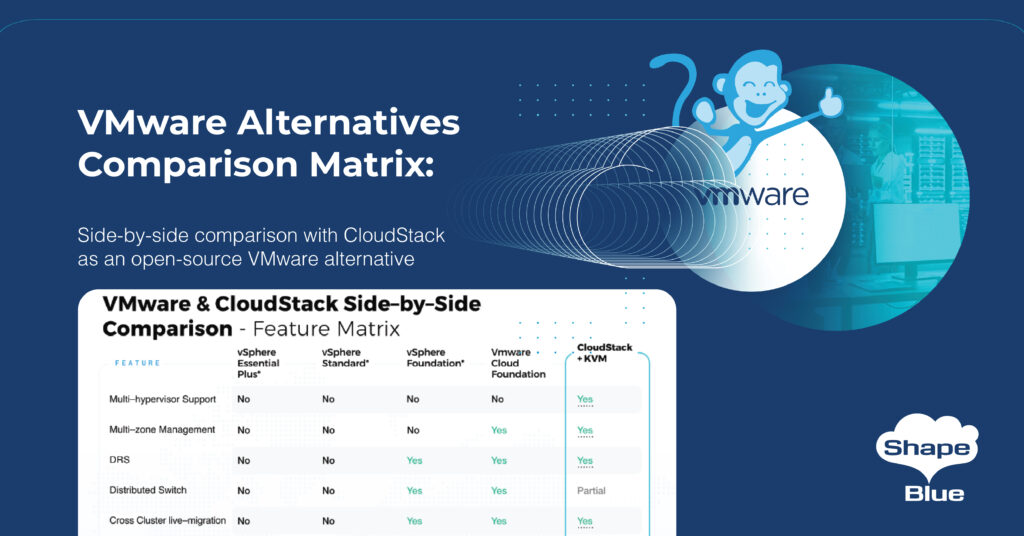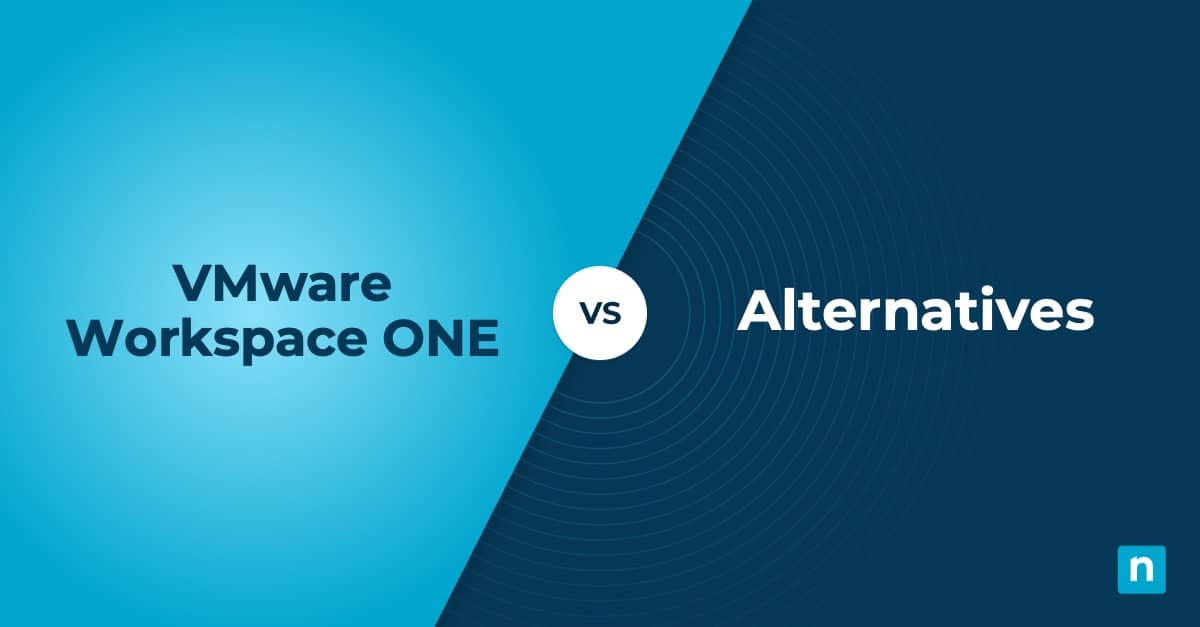VMware Alternatives In 2024: Top Competitors & Why You Need Them
Are you contemplating a shift in your virtualization strategy? The landscape of virtualization is undergoing a significant transformation, and the dominance of VMware is being challenged by a host of compelling alternatives.
The virtualization arena, a cornerstone of modern IT infrastructure, is experiencing a period of dynamic change. While VMware has long enjoyed a preeminent position, recent developments and evolving business needs are prompting organizations to re-evaluate their virtualization strategies. This article dives deep into the world of VMware alternatives, examining the key players, their offerings, and the factors driving this shift. We'll analyze why organizations are seeking alternatives, explore the top competitors in the market, and provide a comprehensive overview to guide your decision-making process.
Before delving into the alternatives, it's crucial to understand the context. VMware, a pioneer in virtualization, offers a robust suite of products, including its flagship vSphere platform. However, the company's acquisition by Broadcom and subsequent changes in licensing models have spurred many enterprise teams to reconsider their virtualization strategies. Cost, performance requirements, and the desire for greater flexibility are key drivers behind this trend. Furthermore, the increasing adoption of virtualization technology across various industries is fueling the demand for reliable and cost-effective alternatives.
- Linda Purl Happy Days Stars Career Romance With Patrick Duffy
- Indian Uncut Porn Watch Free Xxx Videos Now
Virtualization, at its core, is the creation of virtual instances of resources such as servers, storage, and networks. This enables organizations to consolidate hardware, improve resource utilization, and enhance agility. VMware's type 1 hypervisor, the core component of its virtualization offerings, allows multiple operating systems to run concurrently on a single physical machine. VMware Workstation and VMware Fusion, on the other hand, are type 2 hypervisors designed for individual desktops and laptops, enabling users to run multiple operating systems simultaneously.
However, the virtualization landscape is not static. Several factors contribute to the growing demand for VMware alternatives. Cost is a significant consideration, as licensing fees and ongoing maintenance costs associated with VMware can be substantial. Performance requirements also play a crucial role, with some organizations seeking solutions that offer better performance characteristics for specific workloads. Furthermore, the need for greater flexibility, particularly in hybrid cloud environments, is driving the adoption of alternative platforms that offer seamless integration and management across diverse infrastructures.
| Aspect | Details |
|---|---|
| Focus | VMware Competitors and Alternatives in 2024. |
| Goal | Analyze the key players, their offerings, and the factors driving the shift from VMware. |
| Why Alternatives? | Cost, Performance, Flexibility, Licensing Model, Changes and more. |
| Key Players | Microsoft, Citrix, Nutanix, Arista Networks, and others. |
| Market Dynamics | Increasing demand for Virtualization, Growing Cloud Adoption, Broadcom Acquisition. |
| Consideration Factors | Pricing, Features, Integration, Company Reputation |
| Reference | VMware Official Website |
The acquisition of VMware by Broadcom has undeniably reshaped the competitive landscape. While Broadcom has reported strong financial results, with record revenues and significant software sales, many VMware customers are expressing dissatisfaction. This situation has accelerated the search for alternative virtualization solutions. Organizations are now carefully evaluating options, considering factors such as pricing, features, ease of integration, and the overall reputation of the vendor.
- Is Filmyfly Safe Risks Reviews You Need To Know
- Rikki Lynn Laughlin Case Teacher Accused In Missouri Details Updates
In the competitive arena, several key players are vying for market share. Microsoft, with its Hyper-V virtualization platform, is a strong contender, particularly for organizations that have already invested in the Microsoft ecosystem. Citrix, a long-standing player in the virtualization space, offers its Workspace App and other virtualization solutions. Nutanix, with its AHV hypervisor based on the Acropolis virtualization stack, is another notable competitor, providing a compelling alternative with its integrated management and control plane.
Arista Networks also emerges as a prominent contender in the virtualization landscape, especially from the networking side. Its expertise in high-performance networking solutions complements the needs of virtualized environments, providing the infrastructure required for efficient resource allocation and application delivery. Ingram Micro, F5, Morpheus Data, Lumen Technologies, Cisco Systems, Veeam Software, and Unisys all have a significant role in this competitive environment.
When assessing VMware alternatives, careful evaluation of the company itself and a thorough understanding of each platform are crucial. Consider the following factors when making your choice:
- Cost: Analyze the total cost of ownership (TCO), including licensing fees, maintenance, and support.
- Performance: Evaluate the performance characteristics of each solution, particularly for the specific workloads you intend to run.
- Features: Compare the features and capabilities offered by each platform, such as virtual machine management, storage integration, and networking options.
- Integration: Assess how well each solution integrates with your existing infrastructure, including your cloud platform and on-premises systems.
- Vendor Reputation: Research the vendor's reputation, customer reviews, and long-term viability in the market.
The top competitors in the virtualization platform space include Citrix Workspace App, VMware vSphere, and VMware ESXi. According to market share data, these are the leading providers organizations are turning to when assessing alternatives. It is important to understand how the product or service aligns to their infrastructure's need.
Virtualization is intrinsically linked to cloud computing. Platforms like VMware have been popular, particularly in the context of cloud environments. However, the emergence of alternatives, particularly those with more flexible licensing models and enhanced performance capabilities, presents attractive options. The best alternatives in this category are Microsoft and Citrix, with Nutanix being a close third.
Several key points to consider when choosing a hypervisor for a virtual environment include the cost of the solution, its performance characteristics, the features and capabilities, the integration with the current setup, and the vendor's standing in the industry.
As the demand for flexibility and cost savings continues to grow, the number of organizations seeking alternatives to VMware vSphere will rise. As the cloud environment gets more complex, it is important to select a provider that is able to meet your demands in a cost effective manner.
In this rapidly evolving virtualization market, businesses must carefully assess their needs, weigh the pros and cons of each alternative, and choose the solution that best aligns with their goals. The move to alternative platforms signifies a new chapter in the virtualization landscape, characterized by increased competition and a greater focus on providing value to customers.
- Movies Vegamovies Streaming Ethical Considerations In 2024
- Nicole Wallace Gabriel Guevara What Really Happened

VMware Competitors Comparably

VMware Alternatives Comparison CloudStack open source VMware alternative

VMware Workspace ONE Alternatives & Competitors NinjaOne